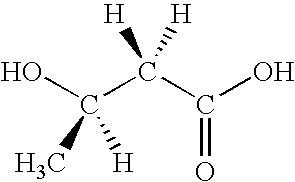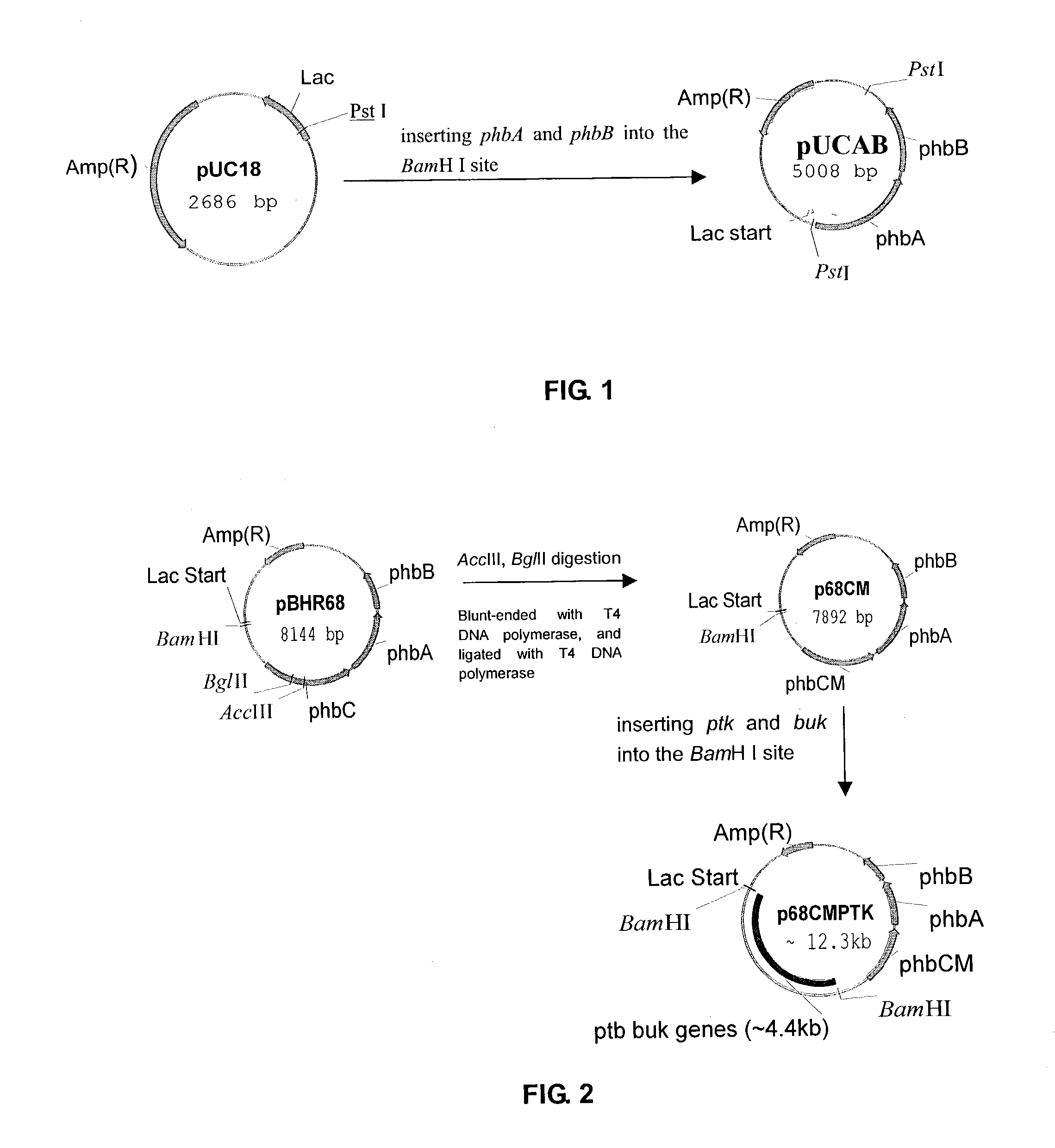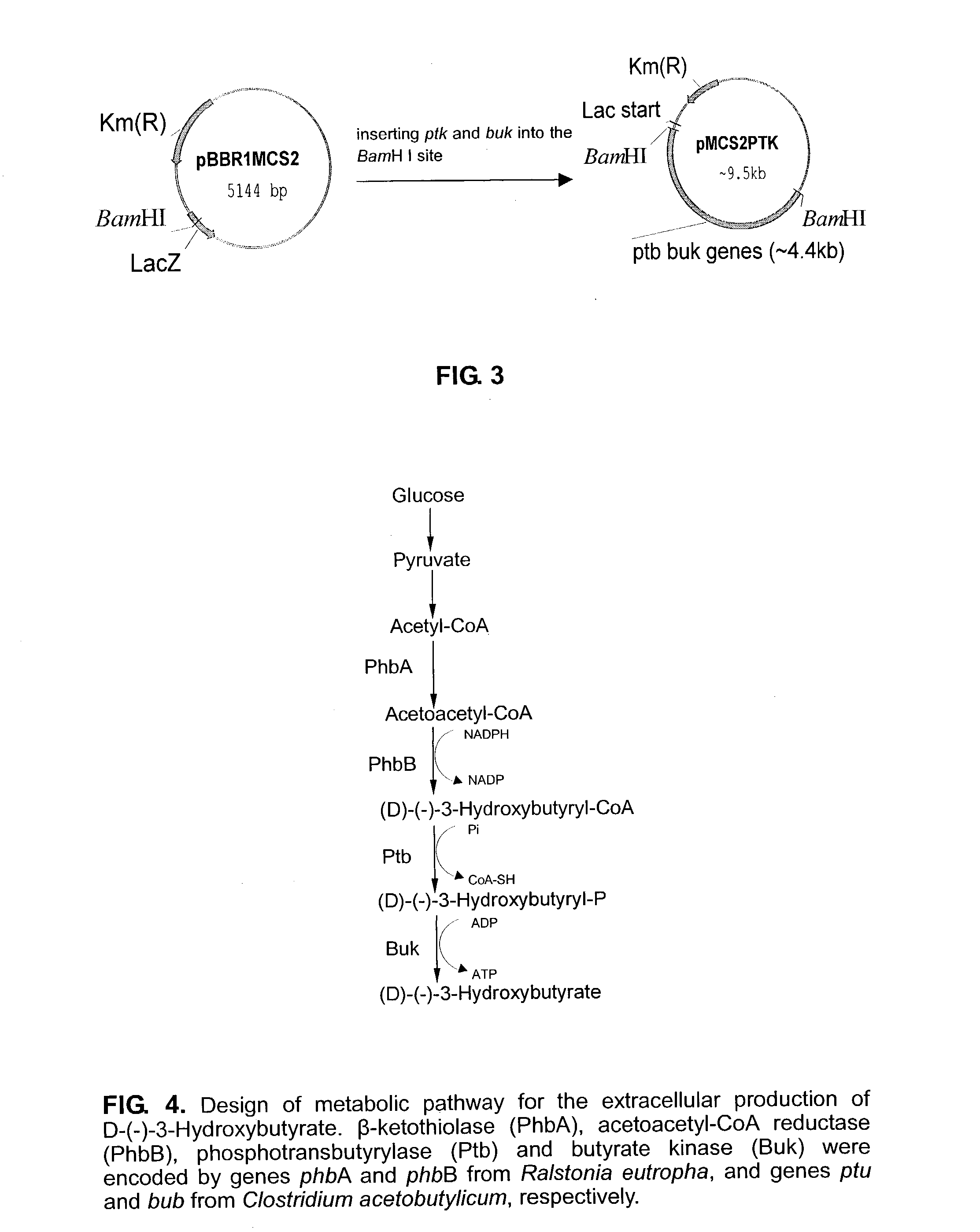Method for the production of D-(-)-3-hydroxybutyric acid by recombinant esherichia coli
- Summary
- Abstract
- Description
- Claims
- Application Information
AI Technical Summary
Problems solved by technology
Method used
Image
Examples
example 2
[0027] This example demonstrates the synthesis of D-(-)-3-hydroxybutyric acid by recombinant E. coli in a fed-batch fermentation process under high temperature and low pH, using glucose as carbon source.
[0028] Strain: Recombinant E. coli containing a single plasmid, such as plasmid p68CMPTK as prepared in Example 1.
[0029] Plasmid transformation method: chemical transformation.
[0030] Culture temperature: 42.degree. C.
[0031] Medium: Medium 2
[0032] pH: 5.5
[0033] Aeration: 3L / 3L medium / min
[0034] Fermentation time: 36 hours
[0035] Stirring speed: 150.about.900 rpm
[0036] A fermentor containing sterilized broth was inoculated by a seed culture in an volume of 10%. The concentration of glucose was 40 g / L. Fermentation began with a stirring speed of 150 rpm and dissolved oxygen was set at 10%. Along with the growth of the cells, stirring speed was automatically increased until reaching 900 rpm, while the dissolved oxygen kept over 10% all the time. After fermentation, cells were centrifuged, ...
example 3
[0038] In this example, sucrose was used as carbon source and peptone as organic nitrogen source to synthesize D-(-)-3-hydroxybutyric acid by recombinant E. coli via a constant, continous fed-batch fermentation under low culture temperature and high pH.
[0039] Strain: Recombinant E. coli containing two plasmids.
[0040] Plasmid transformation method: electrotransformation.
[0041] Culture temperature: 28.degree. C.
[0042] Medium: Medium 3
[0043] pH: 8.5
[0044] Aeration: 2L / 3L medium / min
[0045] Fermentation time: 48 hours
[0046] Stirring speed: 150.about.900 rpm
[0047] A seed culture was inoculated into a fermentor containing sterilized broth with in a volume of 10%. The concentration of beef extract was 10 g / L. The initial concentration of sucrose was 30 g / L. Fermentation began with a stirring speed of 150 rpm. The dissolved oxygen was controlled over 10% by adjusting the agitation. The concentration change of sucrose was monitored on-line during fermentation. When the sucrose concentration wa...
example 4
[0049] In this example, glycerol was used as carbon source to synthesize D-(-)-3-hydroxybutyric acid by recombinant E. coli in a fed-batch fermentation with constant dissolved oxygen.
[0050] Strain: Recombinant E. coli JM 109 containing two plasmids, in which the gene was phbA (AF078795), phb B (L04468), ptb (AJ278958) and buk (AB035092).
[0051] Plasmid transformation method: electrotransformation.
[0052] Culture temperature: 35.degree. C.
[0053] Medium: Medium 3
[0054] pH: 7.0
[0055] Aeration: 2L / 3L medium / min
[0056] Fermentation time: 52 hours
[0057] Stirring rate: 150.about.900 rpm
[0058] A seed culture was inoculated into a fermentor containing sterilized broth in a volume of 10%. No organic nitrogen was added in the broth. The initial concentration of glycerol was 20 g / L. Fermentation began with a stirring rate of 150 rpm and the dissolved oxygen was controlled over 10% by automatic adjusting the agitation. The agitation decreased when the glycerol was exhausted. Then the stirring speed...
PUM
| Property | Measurement | Unit |
|---|---|---|
| Angle | aaaaa | aaaaa |
| Temperature | aaaaa | aaaaa |
| Efficiency | aaaaa | aaaaa |
Abstract
Description
Claims
Application Information
 Login to View More
Login to View More - R&D
- Intellectual Property
- Life Sciences
- Materials
- Tech Scout
- Unparalleled Data Quality
- Higher Quality Content
- 60% Fewer Hallucinations
Browse by: Latest US Patents, China's latest patents, Technical Efficacy Thesaurus, Application Domain, Technology Topic, Popular Technical Reports.
© 2025 PatSnap. All rights reserved.Legal|Privacy policy|Modern Slavery Act Transparency Statement|Sitemap|About US| Contact US: help@patsnap.com



